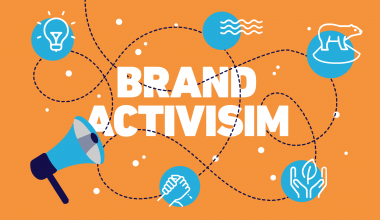In the current competitive market, one of the most important factors for a company’s success is its product branding. It is the emotion a brand arouses in the consumer, the meaning behind a product, and the promise a business fulfills; it is more than just a logo or a catchphrase. It wasn’t until I got involved in a project that required building a brand from scratch that I realized the actual importance of branding. I discovered on that trip that product branding is a combination of strategy, creativity, and consumer psychology. In this article, to explain why all businesses, regardless of size, should engage in product branding, allow me to share my personal experience in an example of promotional product branding services and best practices.
Key Points
- Good product branding helps consumers remember and select your brand by making your goods instantly recognizable.
- Customers are more inclined to choose your goods when you build trust with them through consistent branding.
- Good product branding practices help you stand out in a crowded market by differentiating your goods from rivals.
- By fostering an emotional connection with consumers, branding may convert them into devoted supporters.
- Better pricing and market placement are made possible by well-executed branding, which raises the perceived worth of your product.
Overview
Product branding is the process of applying the concepts of branding practices to a particular product or item. In order to give a product a unique identity, a symbol, name, and design are associated with it. Product branding, including focus groups, several design iterations, and more, can be extremely complicated. It need not be, though. Creating a logo, picking a name, and selecting a packaging color can be all that is required.
Branding for products can change an organization. It has the power to transform a product from a mere item on the shelf into a cherished brand that consumers are willing to stand for. I’ve discovered from personal experience that product branding encompasses far more than just color palettes and logos. It all comes down to building an emotional bond with your clients and giving them the impression that your product enriches their lives in ways that go beyond its practical uses.
Also Read: Want Your Product to Fly Off the Shelves? Follow These 7 Branding Rules
What are the Important Components of Product Branding?
By focusing on these crucial components, I created a powerful brand that appeals to consumers and makes a statement in the industry. The following are the essential components of product branding:
- Name of brand.
- Visual identity and logo.
- Tagline.
- Packaging.
- Brand Voice.
- Brand Story.
- Consumer Experience.
Personal Experience with Product Branding
I worked with a firm a few years ago that was introducing a line of environmentally friendly reusable water bottles. The challenge first appeared to be simple: create a stylish product, choose a memorable brand, and launch it. But the more we studied the process, the more I understood how branding could make or ruin the product. People who cared about sustainability and wellness were our target market, and we wanted our brand to connect with their ideals.
For weeks, we developed graphic identities, tested names, and conducted brainstorming sessions. But when we began to consider the feelings we wished to arouse rather than the product itself, the magic began. Creating a sense of identification where users felt they were part of a movement rather than merely purchasing a bottle was our aim. To represent earth and water, we selected gentle greens and blues in our design. We also used materials that emphasized our environmental theme. Our brand evolved into a lifestyle rather than merely a product. I learned from that experience that branding is more than simply looks; it’s about connecting a product with a purpose and telling a compelling story to the customer.
Promotional Product Branding
I can attest to the power of promotional product branding because I have personally witnessed its success. One important tactic for increasing trust and reputation is promotional product branding. We decided to conduct a marketing effort when our water bottle was first introduced. Reusable bags and stainless-steel straws bearing our emblem and tagline were among the branded items we distributed. These products not only increased our visibility but also strengthened our reputation among prospective clients by demonstrating our dedication to sustainability.
The reason promotional product branding is effective is that it maintains brand awareness in commonplace contexts. When someone used one of our branded bags, they turned into moving advertisements. This type of exposure leaves a lasting impression by gently reminding consumers of the product and connecting it to a satisfying experience.
Promotional products can also increase customer loyalty. Consumers are drawn to free, practical goods, and if they connect your brand with something helpful in their everyday lives, they are more likely to think of you when it comes time to buy.
Example of Product Branding
The following examples show how branding a product encompasses more than just a logo or tagline. The following are:
#1. Coca-Cola
Coca-Cola was prominent at a summer festival, I recall, with banners, bottles, and even freebies. Drinking soda seemed like a part of the entire event, not just a part of it. It felt cheerful because of the distinctive bottle form, the well-known red-and-white branding, and the “Share a Coke” marketing. Even now, whenever I see that logo, I think of pleasant times and joyful memories, demonstrating the true strength of their branding.
#2. Tesla
The concepts of luxury, sustainability, and innovation form the foundation of Tesla’s product branding. By positioning itself as a leader in the transportation industry, the electric car maker has elevated electric vehicles to a desirable and eco-friendly status. Tesla is known for its innovative and forward-thinking technology, which is reflected in its logo, elegant car designs, and CEO Elon Musk’s character. Because of the product branding experience that Tesla has developed, owning one of its vehicles is a declaration of both advanced technology and environmental awareness.
#3. Nike
Nike’s strong brand is centered on motivation, empowerment, and performance. The brand is easily identifiable and exudes strength and determination thanks to its unique “swoosh” emblem and tagline, “Just Do It.” Nike’s brand aims to create a lifestyle that is connected to excellence and athleticism, not only in its clothing and footwear. Nike has mastered the art of storytelling in their advertising campaigns, showcasing athletes from diverse backgrounds to help consumers identify with the company and feel like they are a part of it.
#4. Apple
One of the best examples of how to design a simple, elegant, and innovative identity is Apple’s product branding. The company’s famous Apple logo, simple packaging, and clean lines have made it associated with cutting-edge technology. Apple sells experiences and status symbols in addition to goods. The goal of the branding for all products, including the iPhone, MacBook, and AirPods, is to provide a smooth and straightforward user experience that appeals to the notion of belonging to a select, tech-savvy community.
#5. Starbucks.
Starbucks has been effective in positioning itself where people can unwind and connect between work and home, rather than merely a coffee shop. However, Starbucks has distinguished itself in the competitive coffee business with its globally recognizable green mermaid emblem and consistent store design, packaging, and customer experience. Starbucks is a popular location for coffee lovers because of its emphasis on personalized service, which includes writing customers’ names on cups, and its encouragement of a sense of community.
Product Branding Services
Particularly for startups or small enterprises, product branding practices can be a difficult undertaking. This is where services for product branding are useful. From logo design to brand messaging and market positioning, some organizations and experts focus on assisting companies in building and refining their brand identity.
We believed we could manage everything internally when we first began branding our line of water bottles. However, as we went along, it became obvious that we required expert advice. We hired a branding expert to help us improve our visual identity and language, ensuring that everything we produced was consistent with our basic beliefs. To make sure that the correct people would connect with our brand, they also assisted us with market research.
Using a branding service changed everything. Their knowledge helped us steer clear of typical errors and made sure our brand conveyed the intended message. When we witnessed how people embraced our brand and engaged with our goods, the investment in expert branding services paid off.
Best Practices of Product Branding
I discovered some important techniques along the way that might support any company’s branding initiatives. By adhering to these best practices, we developed a powerful brand that set us apart from the competition and established deep bonds with our clients. Based on my personal experiences, I have identified the following excellent practices for product branding:
#1. Identify Your Brand’s Goals
I started by thoroughly describing our brand’s values. Our eco-friendly water bottles were made for what reason? Our goal was to lessen plastic waste and encourage sustainability. Having this goal in mind helped us maintain our focus during the branding process.
#2. Recognize Your Audience
It’s critical to comprehend your target market. In the beginning, we used surveys and feedback to identify the values and preferences of our clients. With this understanding, we were able to customize our identity to appeal to them on a deep level.
#3. Create a Special Value Proposition
We evaluated what made our goods unique from those of our rivals. In addition to being environmentally sustainable, our bottles were fashionable and useful. Our branding strategy was built on this distinctive value proposition, which enabled us to emphasize our advantages.
#4. Consistency
Maintaining consistency across all platforms is essential, including the logo and the tone of voice. We ensured that the style and messaging were consistent across our packaging, website, and social media posts. Our brand identity was strengthened and made unforgettable by this stability.

#5. Create an Engaging Brand Story
The story behind the product is equally as important to branding as the actual product. We created an engaging narrative that emphasized the significance of using our reusable water bottles and our dedication to sustainability. Customers were emotionally moved by this narrative, which also helped to humanize our brand.
#6. Be Genuine
Authenticity develops trust. We made sure that all of the claims we made regarding our product were true and supported by evidence. Customers became devoted brand ambassadors when they witnessed us living up to our principles.
#7. Connect to Your Audience
Creating a community around your brand encourages loyalty. Through active social media engagement, we gathered input from our customers and encouraged them to share their product experiences. This exchange gave our brand a more approachable and intimate sense.
#8. Track and Adjust
Using analytics and consumer input, we continuously tracked our branding initiatives. This made it possible for us to adapt and remain current. Our long-term success depended on our ability to modify our plan in response to new information.
The Importance of Product Branding
To establish emotional ties, trust, and recognition with consumers, product branding practices are crucial. Any business strategy must include it since it lays the groundwork for sustained success and customer loyalty. The following are the importance of product branding:
#1. Credibility and Trust
Building trust is facilitated by effective branding. By projecting a polished image and continuously producing high-quality work, we established credibility in our industry. Customers felt they could trust us, thus they were more likely to select our items over generic alternatives. Repeat business is crucial for every business, and this trust resulted in repeat purchases.
#2. Identification and Remembering
Effective branding made us stand out in a congested market when we first introduced our environmentally friendly water bottles. Because of our powerful logo and unified messaging, consumers were able to quickly recognize our brand and remember us while making judgments about what to buy. I know how important it is for consumers to remember a brand while they are shopping.
#3. Efficiency in Marketing
Marketing activities are streamlined by branding. The reaction was highly favorable when we started campaigns that matched our well-established brand identity. Messages that were genuine and consistent raised consumer engagement, which in turn raised sales.
#4. Making a Difference from Rivals
In a crowded market, branding helps you set your product out from the competition. We differentiate ourselves from rivals with our distinctive eco-friendly and fashionable positioning. Because of this distinction, it was simpler for clients to pick us over competitors, which helped us establish a niche in the market.
#5. Consumer Loyalty
Loyalty is promoted by strong branding. Consumers are more inclined to return and make more purchases from a brand they identify with. I’ve witnessed this with our loyal consumers, who not only purchase our goods but also spread the word about us to their friends and family, building a strong support system.
Also Read: Top 10 Branding Agency Services in Nigeria in 2024
What is an example of product branding?
Nike is a prime example of product branding. The “Just Do It” tagline, Nike’s underlying message of athleticism and empowerment, and the brand’s powerful identity are all created by the classic logo. The Nike logo is about more than simply shoes; it’s about performance, motivation, and being a part of an athletic community.
What do you mean by product branding?
The process of giving a product a unique personality in its target market is called product branding. This entails creating components that convey the product’s value and set it apart from rivals, such as a name, logo, design, and messaging. Product branding that works emotionally engages customers, fosters trust, and increases brand loyalty.
What are the 5 C’s of branding?
By taking these branding actions, you can outperform your opponent. The five C’s of branding are as follows:
- Clarity: Make sure your brand’s message is understandable and unambiguous.
- Credibility: By maintaining quality and keeping your brand’s promises, you can gain people’s confidence.
- Competitiveness: To stand out in the market, set your brand apart from rivals.
- Consistency: Keep your branding consistent throughout all platforms and interactions.
- Connection: To encourage engagement and commitment, establish an emotional bond with your audience.
What are the four steps of product branding?
A powerful and successful brand presence in the marketplace can be established with the use of these frameworks. The procedures for product branding practices are as follows below:
#1. Do some research
Know your competition, target market, and market trends to help guide your branding approach.
#2. Design
Develop visual components (such as your logo and packaging) and messages that successfully convey your brand identity.
#3. Management and Execution
Introduce your brand to the market, then keep an eye on its performance and make necessary changes to keep it consistent and relevant.
#4. Formulation of Strategies
Provide a review regarding your brand’s, values, and distinctive selling point. These are going to be the cornerstones of your branding efforts.
Conclusion
Looking back on my experience with product branding practices, it is evident that successful companies are those that have an excellent understanding of their target market, an engaging narrative, and a commitment to their core principles. Product branding is a company’s lifeblood, bringing vitality to every encounter with its clientele. It goes beyond just marketing. Remember this when you start your branding journey: a great brand may generate loyal clients, establish credibility, and differentiate your goods in a crowded market. Investing time in your brand is worthwhile. Customer perception of your brand ultimately determines your legacy, so it is important to get it correctly.
Related Articles
- How to Do a Perfect Product Branding in 2024
- 15 Best Examples of Product Video for Marketing
- Consistent Branding Made Easy: An Example of Effective Brand Guidelines
- Branding Process: A Step-by-Step Breakdown
- What Is Corporate Branding?: Why it Works and How to Create One






